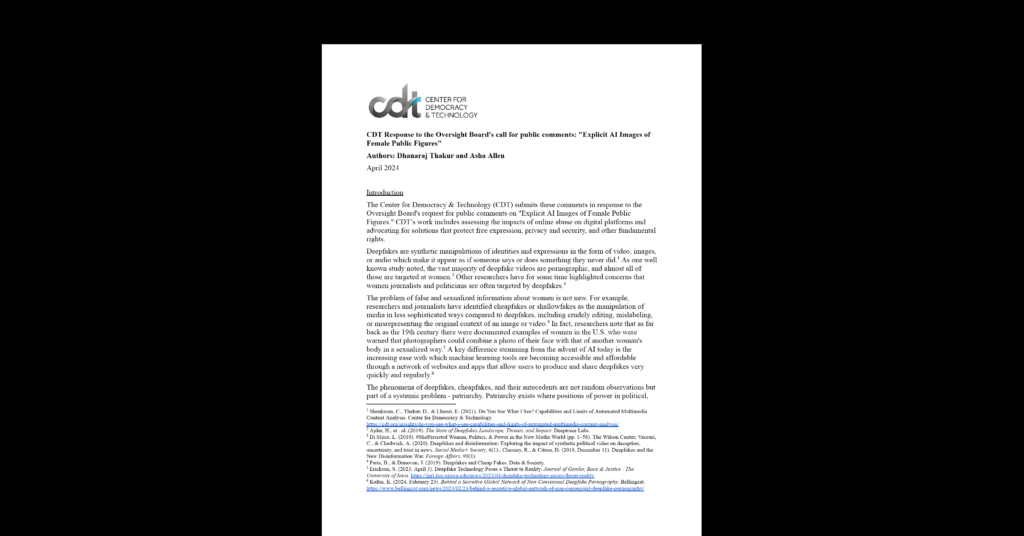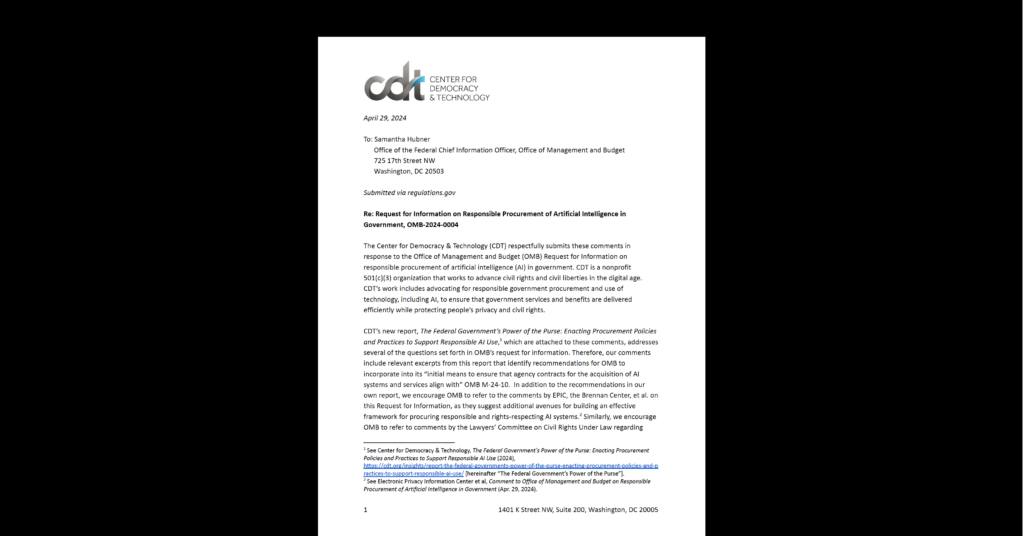Free Expression, Open Internet
Reservoir Clogs: Copyright and the Public Domain
CDT is taking part in Copyright Week, a series of actions and discussions supporting key principles that should guide copyright policy. Every day this week, various groups are taking on different elements of the law, and addressing what’s at stake, and what we need to do to make sure that copyright promotes creativity and innovation.
On January 1, 2019, works entered the public domain in the US for the first time since 1998. CDT is excited to welcome all creative works originally published in 1923 into the public domain and looks forward to seeing them take on new lives as they move outside of the protections and controls granted by copyright. (Anyone want to make a few binge-worthy seasons of crime drama based on Max Brand’s “Hired Guns”?) Although this post is not quite that old, we hope that it, too, can enjoy a new life as part of this year’s Copyright Week.
The United States Copyright Office owes its existence to a single clause in the Constitution: “To promote the Progress of Science and useful Arts, by securing for limited Times to Authors and Inventors the exclusive Right to their respective Writings and Discoveries.” This clause (art. I, § 8, cl. 8) describes an objective (enhancing our collective knowledge) and a method by which to achieve that objective. Although the bulk of copyright law focuses on the method, it is important to remember that copyright protection is a means to achieve a public interest, an interest ultimately manifested in the form of the public domain.
The public domain is made up of all knowledge not covered by some form of IP protection, including facts, ideas, most governmental publications, and works for which copyright has expired. Like water, the public domain is a vital and reusable resource. It is a vast sea of material from which anyone is free to draw inspiration, access information, or use in any way imaginable. For example, the complete works of Shakespeare are part of the public domain, which is why you can get them for free on your e-reader, but the Baz Luhrmann film Romeo + Juliet, is not. Baz and everyone else is free to copy or use the Bard’s plot, characters, or text, but to do so with Luhrmann’s film version (at least until 2092) requires a license or relying on an exception like fair use.
Also like water, the public domain’s value depends on it being refreshed, replenished, and accessible. At the risk of destroying the analogy, copyright is like a private reservoir used to control access to and use of the creative contents within “…for a limited time.” These four words in the IP Clause ensure that the public domain will not stagnate and that the public will eventually benefit from unfettered access to these cultural commons. That is, at some point, an author’s exclusive rights to a work come to an end and that work flows into the public domain.
In the beginning (1790-1831), copyright terms in the U.S. lasted only 14 years. Now they last the length of the author’s life, plus 70 years. “Works made for hire,” which include most movies, enjoy 95 years of protection after publication (or 120 years after creation, whichever is shorter.) This year marks the first time since the enactment of the 1998 Sonny Bono Copyright Term Extension Act that an entire year’s worth of copyrighted material has entered the public domain. This means that the public domain has experienced a 21-year drought. That’s a long time to put the public interest on hold just to give rightsholders’ grandchildren a vanishingly tiny slice of the pie.
Figuring out whether a work is still protected by copyright can be tricky (consult this handy chart if you’re curious). In the past, establishing copyright required authors to provide notice that the work was copyrighted (© 2017, Center for Democracy & Technology) and to register the work with the Copyright Office. These “formalities” meant that one could tell at a glance whether something might be protected by copyright and then simply consult the Office records to determine whether the copyright had expired. Since the U.S. joined the Berne Convention in 1989, however, no formalities are required to obtain copyright. New works are protected by copyright from the moment they are “fixed” in a tangible medium, like writing a sentence, snapping a photo, or recording a song. But effortlessly obtaining copyright comes at a cost.
The end of the registration requirement coupled with term extensions marked the beginning of a dramatic increase in the volume of “orphan” works: works for which the rightsholder either cannot be identified or located. Without a way to obtain permission from the copyright holder, these works remain in limbo, benefitting neither the creator nor the public. Although there are remedial solutions aimed at improving access to and use of these orphan works, such as the digitization efforts of HathiTrust and various legislative proposals based on collective licensing systems, solving the root problem seems unlikely without returning to some form of “formalities.”
The good news is that many authors do register their works. In the long run, registration benefits both the author and the public. Registration is required to bring an infringement suit and entitles the copyright holder to statutory damages if their rights are infringed. Registration also creates a record linking rightsholders and their works, making it possible to identify rightsholders and seek permission to use their works. Finally, copies of all registered works are added to the Library of Congress.
If the public domain is like water, then the Library is an ocean: a vast expanse of creative material, both public and private. Where copyright provides incentives for creators, the Library provides access to our history of progress in the sciences and arts. In this way, the Copyright Office and the Library represent the two elements of the Constitution’s IP Clause, a private incentive and a public interest.
CDT is encouraged by the steps taken by both the Library and the Copyright Office to improve their recordkeeping and information technology systems and looks forward to watching the renewed growth of the public domain reflected in their efforts.
(Originally published 1/16/17, last updated 1/16/19)



